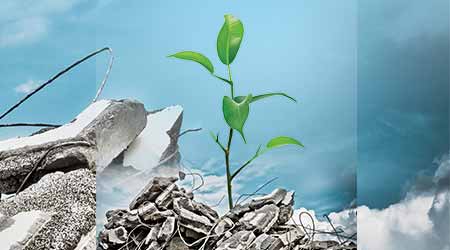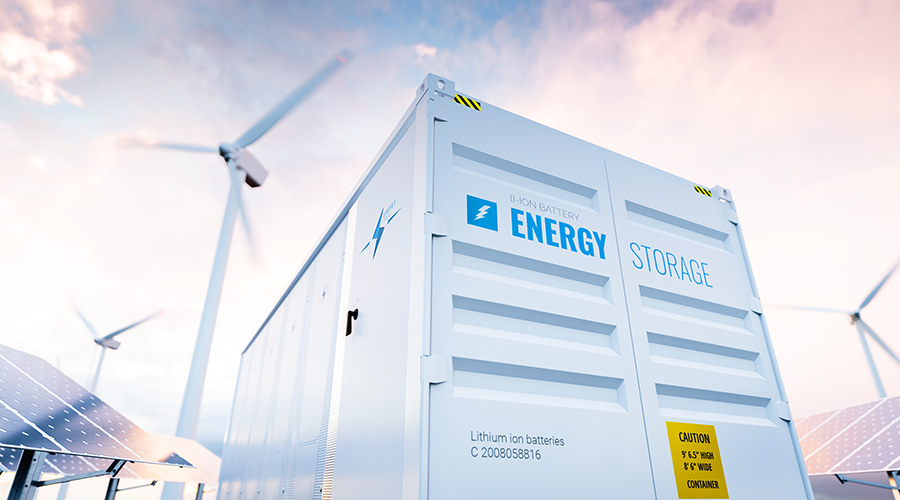To Focus on Resilience, Focus Also on Sustainability
Resilience is not just a trendy buzzword. Focusing on resilience and sustainability in tandem has multiple advantages for facility managers.
Imagine the greenest building you can think of: Sections of green roof dot wide expanses of shimmering PV panels. A glittering glass façade allows for daylighting throughout the narrow floorplate and an ultra-efficient HVAC system helps the building use less energy than it produces. Plants are everywhere, and the landscaping includes huge bioswales and stormwater retention ponds. The building is designated a “250-year building.” It’ll be there long after any of us are.
But then a massive 1,000-year hurricane hits. Does the building survive? If so, how long until it’s back up and running?
This hypothetical situation — perhaps not an extreme example anymore, as extreme weather becomes more common — provides a frame of reference for why it’s critical to think of sustainability and resilience as complementary concepts. The most sustainable building is one that is also resilient to natural disaster. Put another way: The greenest building in the world is the one that doesn’t need to be rebuilt.
“Resilience is absolutely an extension of sustainability when you think about not having to replace a building,” says Evan Reis, executive director and co-founder of the U.S. Resiliency Council.
Furthermore, the most sustainable building is one that allows for quicker recovery, keeps its occupants safe, and fosters minimal disruption to the organization.
Reis puts it this way: “Sustainability is about the building having a low impact on the environment. Resilience is about the environment having a low impact on the building.”
While resilience is still often thought of as a new construction strategy, there are many ways — from water and energy efficiency to building envelope strategies — facility managers can focus on resilience and sustainability simultaneously.
“Resilience is kind of like green building,” says Alex Wilson, president, Resilient Design Institute. “It’s easier to accomplish these goals in new construction. But that doesn’t preclude you from making significant improvements with resilience and sustainability in existing buildings.”
Doing so is a best-bang-for-the-buck strategy. Because it’s difficult (though not impossible) to measure a building’s resilience, sustainability metrics can sometimes work as stand-ins for resilience. As well, new rating systems can help facility managers prioritize concepts and strategies that check the boxes of what’s important for their building type and organization.
Efficiency on an island
Resilience isn’t just a trendy buzzword — it’s come of age in buildings because of extreme weather due to climate change. By focusing on sustainability and resilience in tandem, facility managers have the ability to address two parts of one of the more nefarious climate feedback loops: The more energy required to cool buildings, the more greenhouse gases are released to the atmosphere. And the more greenhouse gases, the more heat gets trapped in the atmosphere, and the more energy required to cool buildings. Resilience helps protect against the effects of climate change already here. Sustainability tries to mitigate future effects.
Energy efficiency and renewable energy, then, are the most impactful strategies that check both resilience and sustainability boxes. The less energy a building uses, the longer it’s able to stay in operation — whether from backup generators or power generated by onsite renewables — if the grid goes down.
Because of better technology and reduced costs, the use of microgrids in buildings (or “islanding”), though not immediately thought of as a sustainability strategy, is one of the most high impact resilience strategies that can be implemented in existing buildings.
“Microgrids are definitely part of a sustainability strategy,” says Billy Grayson, executive director of the Urban Land Institute’s Center for Sustainability and Economic Performance. “These make it easier to consider how to integrate onsite renewables and energy storage.” Onsite energy storage continues to become more practical and cost-effective, as do renewables, and therefore, by extension, microgrids are becoming more feasible. It’s even possible to isolate critical functions on the energy generated from PVs, says Douglas Pierce, senior project architect with Perkins+Will. “Then you don’t need as much fuel onsite to power generators, and you can just run generators at night,” he says.
But if you can store that PV-generated energy, it may not even be necessary to run the generators at night. “The holy grail is providing renewable energy with onsite storage so you can rely on this power during an outage,” says Wilson. “We’ve seen dramatic improvements in electrical storage in the past five years.”
Even if the grid isn’t down, however, microgrids are becoming increasingly cost-effective because they can dramatically reduce demand charges at high-demand times or during utility demand-response events. If connected to the grid, microgrids can also allow for the trade of power during these high-demand events. This helps make the investment in renewables more affordable, and improves the return-on-investment justification, says Grayson.
Related Topics:














